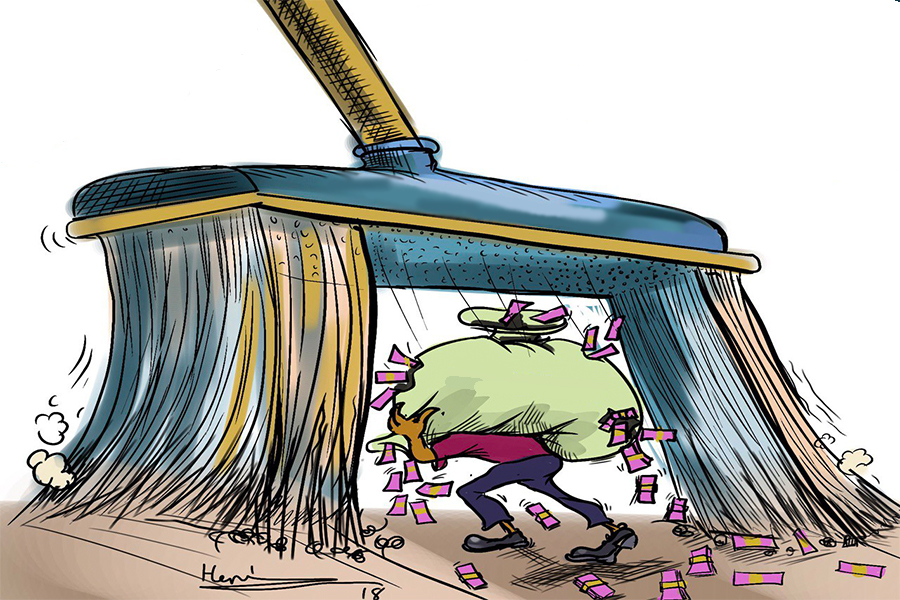
Photo Gallery | 180551 Views | May 06,2019
Sep 27 , 2025. By Mekonnen Solomon ( Mekonnen Solomon (ehdaplan@gmail.com) is a horticulture export coordinator and senior staff of the Ministry of Agriculture. )
A recent survey found mixed bouquets selling for between 8,000 Br and 35,000 Br, depending on neighbourhood and season. City officials report 903 flower shops scattered across the capital, but cold-chain gaps and a lack of formal training in floristry limit the vitality and lifespan of what ends up on display. Writes, Mekonnen Solomon (ehdaplan@gmail.com) is a horticultural coordinator at the Ministry of Agriculture (MoA).
Methera once shimmered like a Dutch postcard tucked into Ethiopia’s Rift Valley. Officially called Merti-Methera, the town 193Km southeast of Addis Abeba, was designed in the 1950s by Handelsvereniging Amsterdam, popularly known as HVA, after the Dutch conglomerate carved thousands of hectares of sugar cane out of the valley floor.
Brick cottages stood in rows, footpaths arched under shade trees, and every yard brimmed with climbing lilies, geraniums and petunias. Visitors talked about evenings scented with blossoms and gardens that looked more European than African. I grew up in those lanes. A walk to school meant brushing against lavender petunias, and weekends were for helping neighbours prune roses. Plants steadied the pulse and proved how order comes from tending small things.
But Methera’s beauty did not last. The sugar estate faltered, its population growth overwhelmed water lines and roads, and municipal care evaporated. Paths cracked, irrigation ditches clogged with silt, and the flowerbeds that once dazzled the valley turned brown. Residents have tried patchwork repairs, yet a swelling influx of settlers keeps the job unfinished.
That personal loss echoes through my work in the floriculture industry. In travels across Africa, Asia and Europe, I pass towns that still treat flowers as public infrastructure. Amsterdam budgets for “flower streets” each spring and Tokyo’s Ginza district hires botanists to compose tiny sidewalk beds. Addis Abeba has begun borrowing that template, and the effort comes when the flower economy is both booming and lopsided.
The country ships an average 274tns of cut flowers every day, roughly 100,000tns a year, to buyers in Europe and the Middle East. Roses dominate the cargo, joined by summer blooms, ornamental cuttings and potted plants. Exports rank among Ethiopia’s top earners of hard currency and, admirers say, lift the mood of consumers abroad.
If tulips cheer Dutch windowsills, why should Ethiopians settle for drooping stems at home?
The imbalance comes from a tug of war between export demand and domestic supply. Policy prizes dollars, so first-rate blooms seldom linger in Addis Abeba. However, a swelling middle class is rewriting the equation. The capital hosts 134 embassies, 28 United Nations agencies and 2,953 civil society groups. Offices mark openings with bouquets, and families use flowers to celebrate birthdays, graduations, weddings, Christmas, Easter, Ramadan and Valentine’s Day. Disposable income is inching upward, and so are expectations for quality and choice.
City officials count 903 flower shops scattered through Bole, Yeka, Kirkos, Kolfe-Qeraniyo, Aqaqi-Qaliti, Nifas Silk-Lafto, Addis Ketema and Lideta districts. Much of their merchandise comes from the same highland farms that feed European auctions. But what fails to meet export standards often arrives wilted, with flaccid stems, faded colours, and weak leaves. A survey conducted this month found a mixed bouquet selling for 8,000 Br to 35,000 Br, depending on neighbourhood, species and season.
Traditional storefronts struggle to justify those sums. Many display flowers in galvanised buckets under bare bulbs and rely on pickups that bounce along unrefrigerated roads for hours. Cold-chain gaps can cut vase life in half before the stems reach the market. There are no accredited college programs in floristry; vocational schools seldom mention the craft. Most shopkeepers learn by trial and error, often through YouTube.
City planners believe the gap presents an opportunity. A corridor development program seeks to transform Addis Abeba into a smart city, commercial gateway, and tourism hub. Roads are being widened, riverbanks are cleaned, bike lanes are painted, and new parks are planned. Hanging baskets already swing above stretches of Bole Road, Casanchis and Megenagna, splashing concrete canyons with colour. Hillside forests now carry preservation fences, and volunteers line fresh sidewalks with marigolds. Greenery eases stress, encourages walking and softens the skyline’s glass and steel.
In March 2024, the Investment Board issued a directive, opening the wholesale and retail flower trade, which had been previously off-limits to foreign capital. Early entrants talk about climate-controlled warehouses, branded kiosks and a florist college that would teach design theory, plant care and shop arithmetic. A Dutch-Kenyan consortium plans to include certification courses and scholarships for low-income students in its two-year blueprint.
More than a dozen foreign delegations have toured sites this year, and the city officials plan a flower fair at a new exhibition centre. They hope the inaugural event, tentatively set for next spring, will draw growers from Kenya, Rwanda and beyond, turning Addis Abeba into East Africa’s flower marketplace. Bougainvillaea and hibiscus motifs already decorate tourism brochures and may soon migrate from paper to pavement.
There may be concerns over liberalisation policy that coincides with a wider push to privatise once-protected sectors. There could also be a fear that imported stems could undercut domestic farmers who depend on local outlets for seconds, and whether a city wrestling with intermittent water shortages should devote scarce resources to ornamental plants. However, many residents welcome the change.
Officials frame the initiative in economic terms. A greener capital, they argue, will attract conferences and high-spending tourists, creating jobs ranging from warehouse packers to delivery cyclists. The corridor plan sets canopy targets and encourages private sponsorship for street-side maintenance. However, logistics remain the logjam.
Pilot projects envision refrigerated trucks linking farms in Holeta and Ziway to depots on the city’s fringe, with electric vans carrying orders downtown in under two hours. Some investors pitch “dark stores,” mini-warehouses that ship online bouquets within minutes. Courier apps already deliver coffee. Carnations could ride the same circuit.
Quality is another frontier that requires export protocols from pre-dawn cutting and hydration in chilled water to boxing at four degrees Celsius. Applying that discipline locally will raise costs, but retailers insist buyers will pay if petals stay fresh for a week. The broad price range leaves room for both premium and budget tiers.
Taste may prove the bigger test. Europe rotates arrangements by season (tulips in spring and dahlias in autumn) while Addis Abeba still equates romance with red roses year-round. Shopkeepers discuss pop-up classes, Instagram tutorials, and window-display contests to broaden palates. The proposed florist college would devote an entire semester to colour theory and native species, because flowers deliver more than a mere trade.
Hanging bouquets double as public art, sparking selfies and teaching children their colours. Studies in other cities link urban greenery to cooler streets and cleaner air. Addis Abeba’s planners hope bougainvillaea can do as much for civic morale as another billboard.
Investors betting on the domestic retail flower market, therefore, face a double mandate to keep stems fresh and keep communities engaged. If they strike that balance, the capital could bloom in more than one sense, and a country that exports petals by the planeload might finally reserve a fragrant share for itself.
PUBLISHED ON
Sep 27,2025 [ VOL
26 , NO
1326]

Photo Gallery | 180551 Views | May 06,2019

Photo Gallery | 170745 Views | Apr 26,2019

Photo Gallery | 161822 Views | Oct 06,2021

My Opinion | 137293 Views | Aug 14,2021

Nov 1 , 2025
The National Bank of Ethiopia (NBE) issued a statement two weeks ago that appeared to...

Oct 25 , 2025
The regulatory machinery is on overdrive. In only two years, no fewer than 35 new pro...

Oct 18 , 2025
The political establishment, notably the ruling party and its top brass, has become p...

Oct 11 , 2025
Ladislas Farago, a roving Associated Press (AP) correspondent, arrived in Ethiopia in...